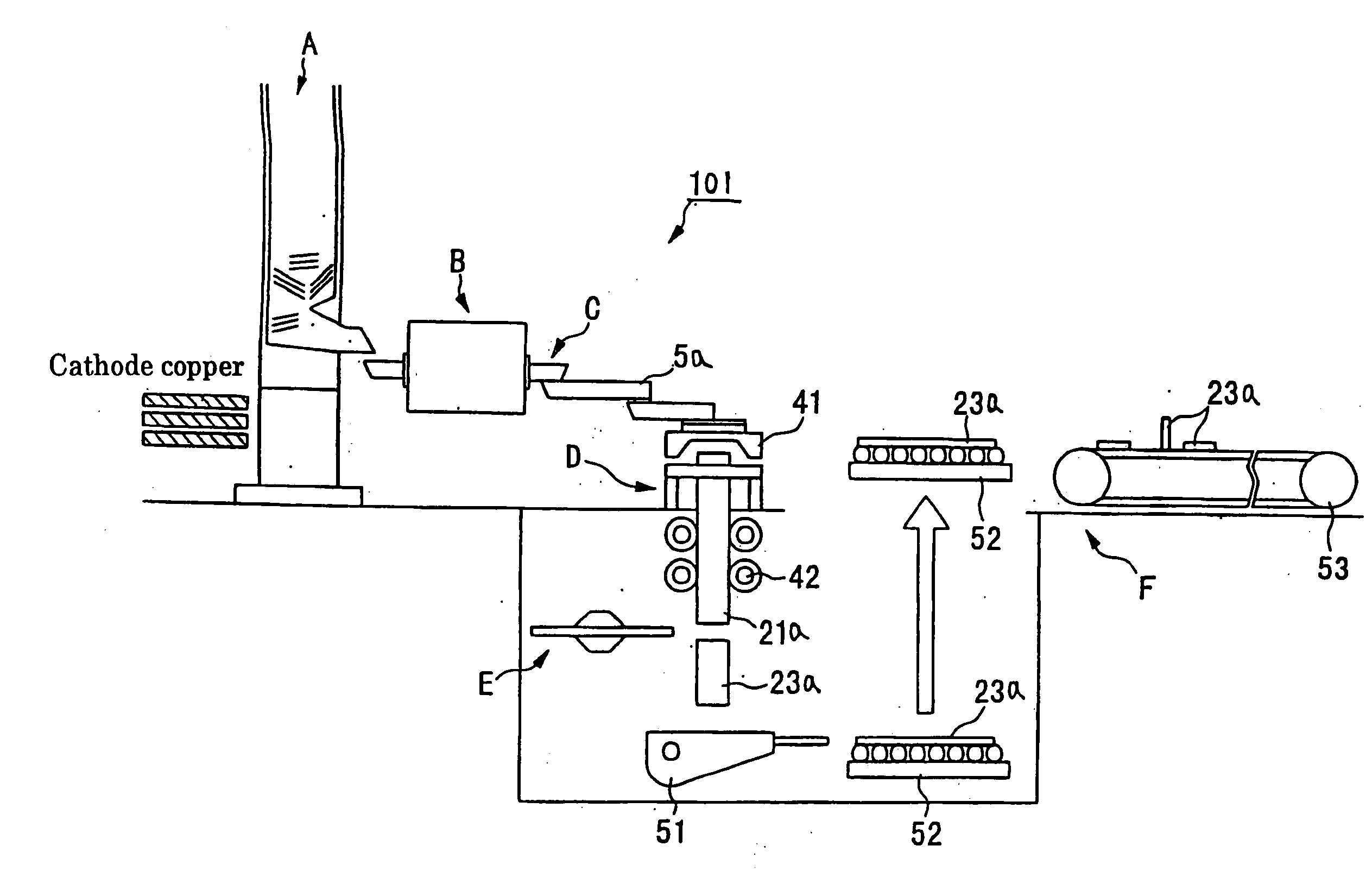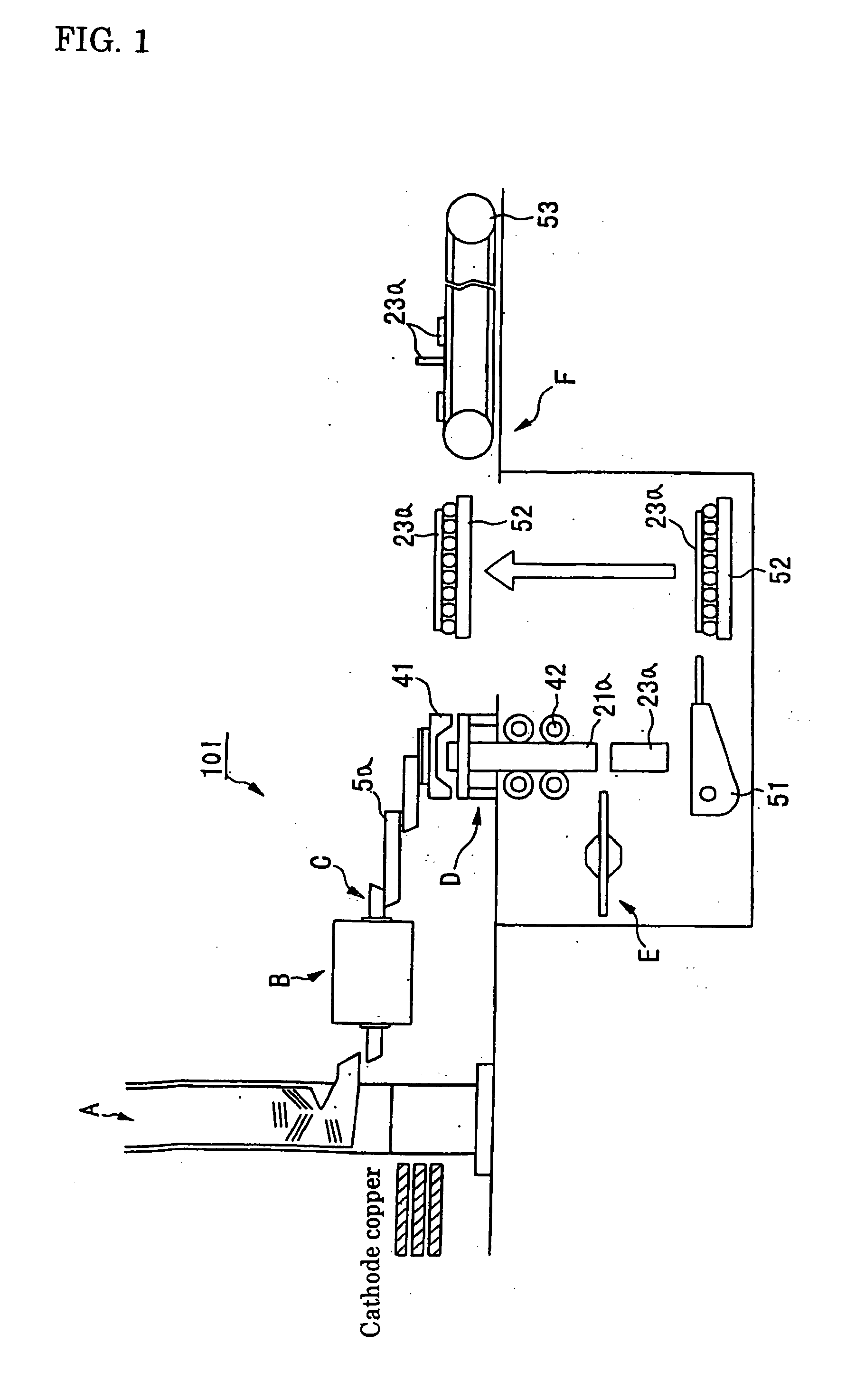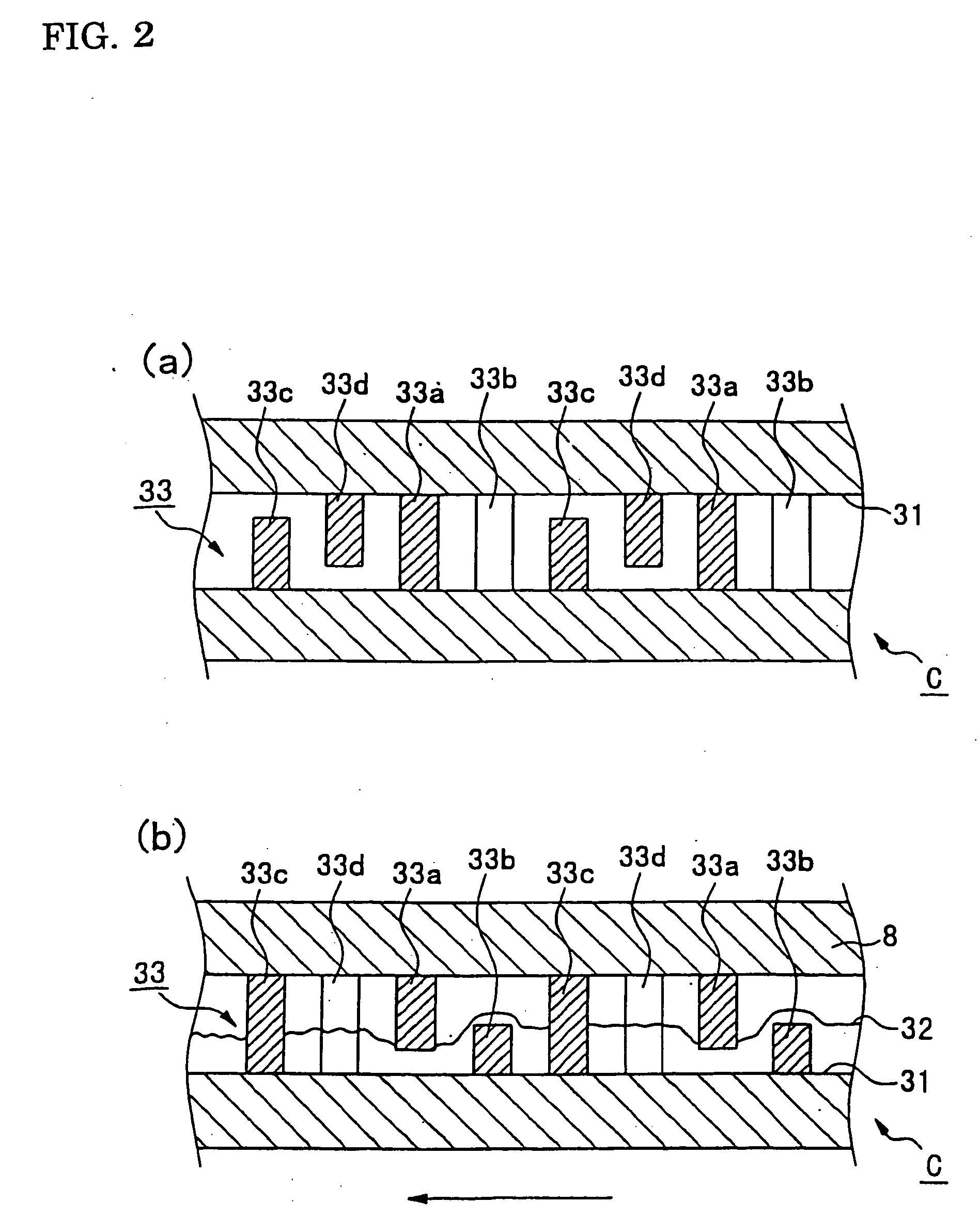Method for manufacturing low-oxygen copper
a technology of low-oxygen copper and manufacturing method, which is applied in the direction of manufacturing tools, metal-working equipment, metal-working equipment, etc., can solve the problems of low productivity, high construction cost and operating cost, and gas furnace, and achieve the effect of reducing construction cost and operating cost, and reducing production cos
- Summary
- Abstract
- Description
- Claims
- Application Information
AI Technical Summary
Benefits of technology
Problems solved by technology
Method used
Image
Examples
first embodiment
[0042] A first embodiment will first be described with reference to FIGS. 1, 2A, and 2B. This embodiment relates to a method for manufacturing an ingot of low-oxygen copper.
[0043]FIG. 1 is a schematic view showing the structure of an apparatus for manufacturing an ingot of low-oxygen copper, which is used in this embodiment of the present invention, and FIGS. 2A and 2B are enlarged plan and side views, respectively, each showing an important portion in FIG. 1.
[0044] An apparatus for manufacturing an ingot of low-oxygen copper (an apparatus for manufacturing low-oxygen copper) 101 is composed of a melting furnace A, a soaking furnace B, a casting trough C, a continuous casting machine D, a cutter E, and a transfer device F.
[0045] As the melting furnace A, a gas furnace having a cylindrical furnace body, such as a shaft furnace, is preferably used. Under the melting furnace A, a plurality of burners (not shown) are provided in the circumferential direction of the melting furnace A,...
second embodiment
[0072] Next, a second embodiment will be described with reference to FIGS. 3 and 4. This embodiment relates to a method for manufacturing low-oxygen copper wires.
[0073]FIG. 3 is a schematic view showing the structure of an apparatus for manufacturing low-oxygen copper wires, which is used in this embodiment of the present invention. The apparatus for manufacturing low-oxygen copper wires (an apparatus for manufacturing low-oxygen copper) 102 is primarily composed of a melting furnace A, a soaking furnace B, a casting trough C2, a belt caster type continuous casting machine G, a rolling machine H, and a coiler I.
[0074] In this embodiment, since the melting furnace and the soaking furnace have the structures equivalent to those described in first embodiment, respectively, the same reference levels of the elements in first embodiment designate the same constituent elements in this embodiment, and detailed descriptions thereof will be omitted.
[0075] The casting trough C2 seals the mo...
third embodiment
[0094] Next, a third embodiment will be described with reference to FIGS. 5, and 6A to 6D. This embodiment relates to a method for manufacturing a wire composed of a low-oxygen copper alloy containing silver (Ag).
[0095] The inventors of the present invention discovered through intensive research that by adding a small amount of Ag to molten copper, holes generated in the cast copper alloy containing Ag become finely dispersed micro holes, and that the micro holes thus formed disappear in rolling and do not cause any defects. Accordingly, the generation of holes which is harmful to the wire composed of the low-oxygen copper alloy can be suppressed. In the method for adding Ag, there is still another advantage in that a decrease in the conductivity of wire composed of the low-oxygen copper alloy can also be suppressed.
[0096]FIG. 5 is a schematic view showing the structure of an apparatus for manufacturing the wire composed of the low-oxygen copper alloy which is used in this embodim...
PUM
| Property | Measurement | Unit |
|---|---|---|
| temperature | aaaaa | aaaaa |
| surface qualities | aaaaa | aaaaa |
| solubility | aaaaa | aaaaa |
Abstract
Description
Claims
Application Information
 Login to View More
Login to View More - R&D
- Intellectual Property
- Life Sciences
- Materials
- Tech Scout
- Unparalleled Data Quality
- Higher Quality Content
- 60% Fewer Hallucinations
Browse by: Latest US Patents, China's latest patents, Technical Efficacy Thesaurus, Application Domain, Technology Topic, Popular Technical Reports.
© 2025 PatSnap. All rights reserved.Legal|Privacy policy|Modern Slavery Act Transparency Statement|Sitemap|About US| Contact US: help@patsnap.com



